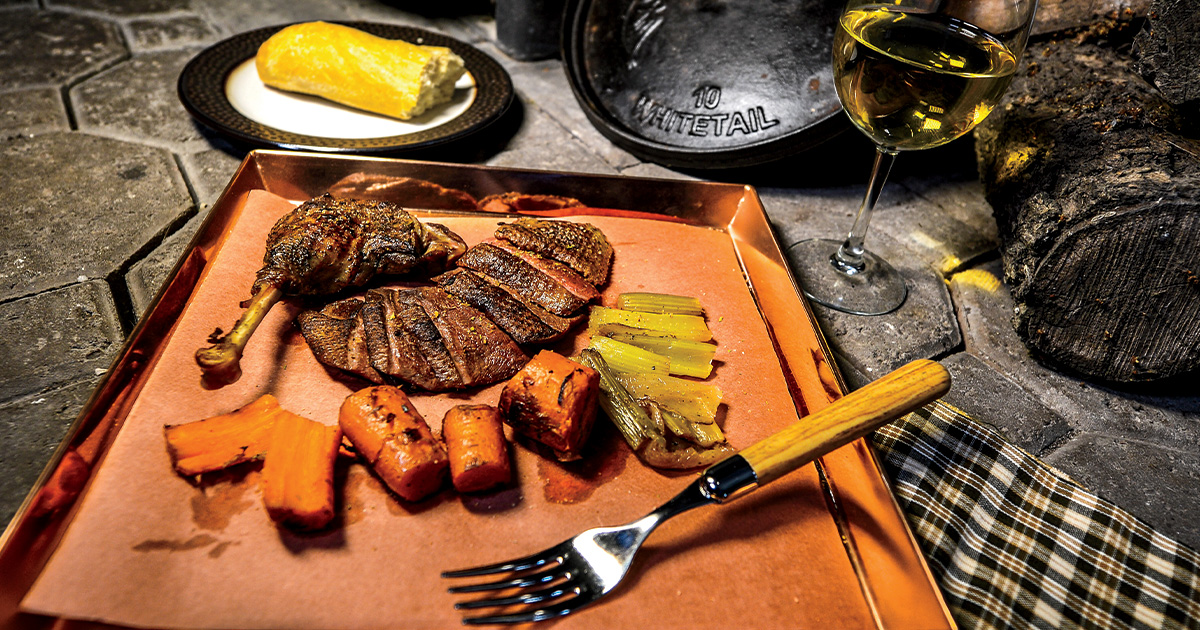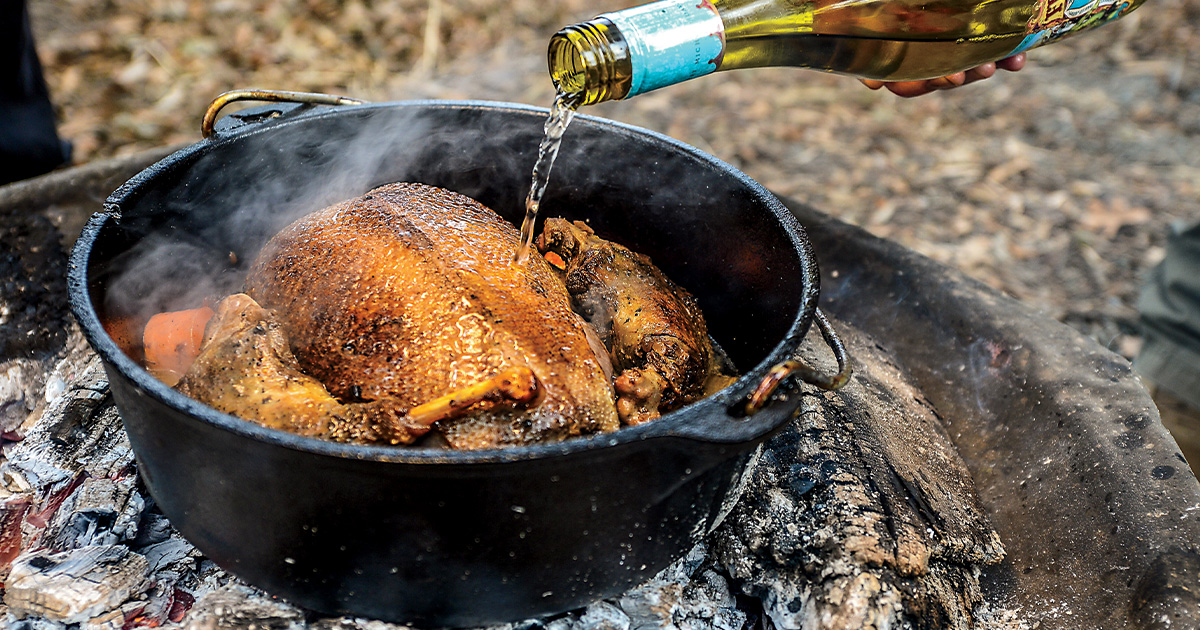Best Roast Goose
A new take on this traditional dish
A new take on this traditional dish


I once attended a wild game feed where everyone was invited to bring their favorite dishes. There was the predictable assortment of poppers, chili, and meatballs, but when someone walked in with a beautiful roasted whole Canada goose on a colorfully garnished platter, it elicited “oohs” and “aahs” from the assembled guests.
A whole roasted wild goose might look pretty on a platter, but it really doesn’t make much culinary sense. If you look through a mainstream cookbook and see a glistening holiday goose, you can be pretty sure that a hunter did not harvest that bird. Instead, it was likely raised in captivity and fed regularly, and it never migrated thousands of miles or had to escape from predators. The fat content of a domestic goose is roughly six times that of a wild goose. Fat equals flavor and forgiveness. An overcooked domestic goose, while not as juicy as a properly cooked bird, is decent table fare, but if you overcook a wild goose, the results will be much less than desirable.
Before roasting a whole duck or wild goose, it’s best to remove the leg and thigh sections and give them at least a two-hour head start. Medium-rare breast fillets are delicious, but legs cooked the same way are barely edible, and much of the meat is wasted since it is still firmly attached to the bone. Cooking the legs and thighs for a longer period of time will result in fall-off-the-bone meat.
Dutch Oven Goose
Yields: 4 servings
Some geese are better roasting candidates than others. I will roast a younger Canada goose, but not an old one. Fortunately, I hunt in an area with plentiful white-fronted (specklebelly) geese, which are excellent when prepared using this method. Try the same recipe with a plump mallard or pintail.
INGREDIENTS
The Brine
The Bird

Add wine or broth to the pot and simmer with vegetables for a tender and tasty bird.
PREPARATION
Ducks Unlimited uses cookies to enhance your browsing experience, optimize site functionality, analyze traffic, and deliver personalized advertising through third parties. By continuing to use this site, you agree to our use of cookies. View Privacy Policy